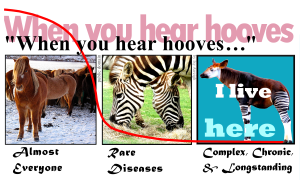Things that are put into the public domain by the creator are generally free to use, modify, sell, etc. Things that are in public domain due to age are a little more variable from place to place. Wikimedia has an article about that.
Basically, you’re responsible for knowing what not to use in your country.
Here are public-domain sources I use, and a few (currently 1) images I’ve made (using creator-released public domain images) which I’m putting into the public domain myself.
Online sources for public domain images
Some of these may be repetitive. For instance, Wikimedia has a lot of images from NASA, and the search/aggregation sites have some of the museums attached.
However, 25 years of internet work has convinced me that overlaps are rarely complete, articles get deleted or rewritten, and that embedded link lists go quickly out of date. I’d like to keep this one current!
So, providing redundant links (rather than just saying, “go to Museo” or something) gives you more than one shot at accessing these resources.
Wikimedia Commons, the original open-source archive of images contributed by those who made them, and those who photograph old works faithfully. Check the attribution info, because the degree of freedom varies from “non-commercial use” to “public domain”.
Smithsonian Open Access, the online project of one of the more massive art & cultural collections in the world. The site lets you either get straight to what you’re looking for, or gives sensible support for browsing around.
It’s the best online source I’ve found for open access Native American, Central and South American, African, Pacific Island, and Asian art. If you have other good sources for these and other places, please let me know.
Many museums have joined the Open Access movement:
The National Gallery of Art (U.S.)
The Metropolitan Museum (NYC, U.S.)
The Art Institute of Chicago (Impressionist & Post-Impresssionist focus with good color repro)
New York Public Library (somewhat regional focus, but NYC has been a cultural powerhouse for over a century.)
Rijksmuseum (lots of Dutch masters!)
Los Angeles City Museum of Art has a collection from all over the world, from ancient to modern. This link takes you to search results that have only open-use images.
David Rumsey Map Collection goes from ~1500s to now, with celestial, world, and local maps. Lots of variety.
The Walters Collection has good images of well-lit objects and pictures from around the world and many eras.
U.S. agency resources
Certain U.S. Federal agencies provide free, public-domain access to their images, on the grounds that the public pays for them, so they ought to have access to them:
NASA’s glorious collection of images from and to space.
The Bureau of Land Management posts their images on Flickr.
The National Park Service has glorious shots of wildlife and scenery, and lots of them.
The Library of Congress has eclectic collections. I find the page hard to look at, but I’m told others can work with it. YMMV. Not all of these images are public domain, so phrase your searches accordingly.
Aggregators and visual search engines
In addition to the museum collections listed above, there are aggregating sites and visual search engines that access several collections at once, like:
Europeana includes materials provided by museums and users to create an online collection of European history, culture, and so on.
Museo, a visual search engine that checks the whole web.
Note: My thanks to the curated and commented list of Public Domain Images for Artists at the MoMa U.K., for providing good leads and descriptions. (Above, I’ve left out the more persnickety sources listed there.)
Rich, but less free or helpful, options
There are magnificent museums which have made much of their collections available, and continue to add more all the time. These images are not necessarily public domain, even if the makers are long gone. (Property rights around art is a huge legal specialty. I try to stay away from it.)
Consider these inspirational, rather than source material:
Louvre – only the main body text shows up in your default language. Stunning collection, all the same.
The British Museum Collection Online involves lots of scrolling, but can really be worth it.
The Victoria & Albert Museum – optimized for mobile browsing. Gorgeous images.
L’Hermitage pulling together European, Middle Eastern, and Asian art.
For yet more stunning images, search for your favorite region and era. There is a whole world of glorious visual splendor. If you can read more than one language, your options open up a lot.
Parting thought
Benefiting from museum collections gets us quickly into larger rights issues than whether it’s in public domain or not. I probably don’t need to elaborate on that. Art is learned, borrowed, traded, inspired, sold, and generally travels a lot further than people do; that said, in our multi-ethnic and multi-racial modern societies – where we can finally travel as far as our art does – it’s more important than ever to respect its sources.
Try knowing about what you use, and valuing where it came from. Help others learn. It’s a big world and worth sharing.
Others have framed these concepts better. For an inspiring example, here’s a good article about a white historian studying early photography in West Africa, which was at the forefront of the new technology.
My public domain images
These are mine and you can have them. Knock yourselves out. Have fun!
“When you hear hooves”
This image came out of my frustration with being so medically weird that many practitioners act like I’m as rare and hard to see as… not just a zebra, but possibly an okapi.
